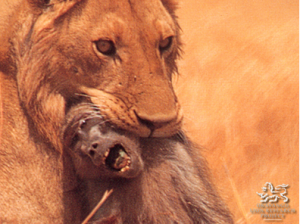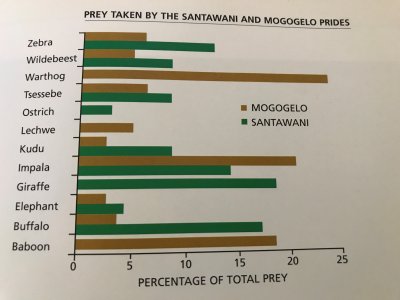News
Latest Lion Aid News
Cultured Animals
Thursday 1st July 2010
|
One of the many definitions of “culture” according to the Merriam-Webster dictionary is: “the integrated pattern of human knowledge, belief, and behaviour that depends upon the capacity for learning and transmitting knowledge to succeeding generations”. Behavioural biologists have long known that this definition of culture also exists among animals, that cultural differences exist among different populations of a species, and that animal parents teach their offspring. If the content of such “lessons” is different among a species’ populations across a geographic range, some interesting variations among local groups can result.
Meadowlark accents
For example, songbirds exhibit different dialects in different parts of the species’ geographic range – they learn the song from their parents, much like humans learn their dialect from other humans in their immediate environment. So a songbird is probably as capable as a human to notice that a particular individual “is not from here”. The same dialect differences might also apply to whale “songs”. Tool use among chimpanzees is also learned – only some groups know how to use sticks to fish termites out of mounds as the others have never been shown this useful trick. And while the programme of teaching sign language to chimps is controversial in terms of the actual level of communication with their trainers, there is evidence that some signs were learned by one chimp from another.
Learning among lions
This kind of parent-offspring learning also applies to lions. Cubs have a long period of dependency on their mothers, and all the time they are learning. From a young age, lion cubs are assimilating a huge amount of information about their environment. They learn who their pride members are, they learn the pride territory, and they learn how to hunt – different species require different tactics. And interestingly, they learn what to hunt.
I show here some data from neighbouring prides in Botswana – the Mogogelo pride and the Santawani pride. By neighbouring I mean they lived right next door to each other, and would often trespass into each other’s territories. However, this being the southern end (at the time of my study) of the Okavango Delta, the Mogogelo pride had permanent water in its territory and the Santawani pride did not. So you would expect some differences in prey eaten – the Santawani pride would not have access to lechwe, for example, which is a species very much associated with wet areas.
However, if you look at above graph, you can see some interesting differences in the diet of these two prides in terms of species that occurred in both areas. Based on prey data gathered opportunistically over a period of 6 years (308 kills) the Santawani pride greatly outnumbered the Mogogelo pride in terms of numbers of giraffes killed. In contrast, the Mogogelo pride killed many more warthogs and baboons. In fact, the Santawani pride did not kill a single baboon over that period.
Baboons tell the story
The difference in baboon prey tells much of the story, I think. When a baboon sees a lion, it gives an alarm call, and all the baboons in the troop rush for the nearest tree. The Santawani lions would look at them sitting up there, out of reach, and keep on walking. The Mogogelo pride, however, had learned a clever trick. Jump up onto the base of the tree, the baboons think you are a leopard, and they all leap down out of the tree – into the mouths of the lions waiting below. This was a learned behaviour likely passed down the generations of the Mogogelo pride, same as tool use among chimps. The Santawani pride knew how to hunt adult giraffes, the Mogogelo pride walked past them – they did not know how to hunt such a big animal and how to bring it down.
All large predators need to be adaptable and intelligent, but few can match lions in terms of the wide variety of species taken as prey, and what is taught by successive generations is an important part of lions’ success as top predators.
Say what?
So the next time on a safari, if you can hardly understand the person sitting next to you though he says he’s speaking English, and if you see a lion pride ignoring a giraffe walking by – blame it on culture!
Picture credit: Chris Harvey Categories: Lion Behaviour/Ecology |
Posted by Pieter Kat at 13:33
No comments have been posted yet.
Add a new comment
Existing user
New user sign up





